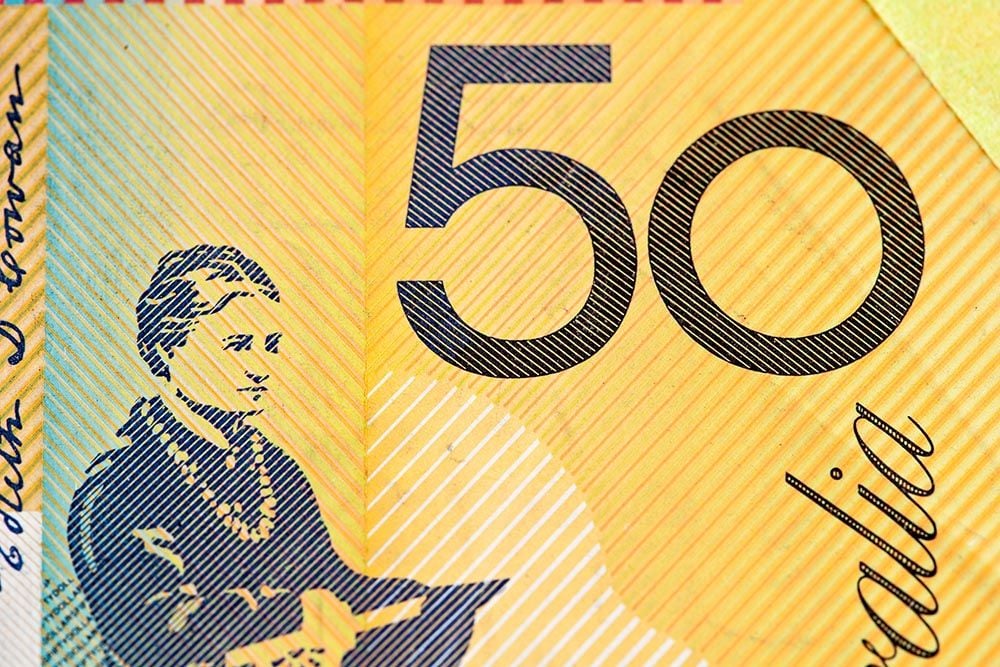The Australian Dollar Outlook is Clouding Over after Commodity Price Headwinds Return to Haunt Currency
- Written by: James Skinner

© Greg Brave, Adobe Stock
- AUD recovers overnight loss but outlook clouds over.
- Iron ore and oil market routs now threaten the AUD.
- Outlook hinged on Chinese steel demand and OPEC.
The Australian Dollar stabilised following an overnight slump on Tuesday but the outlook is growing more uncertain because commodity price headwinds are now returning to haunt the currency.
Iron ore fell by 6% overnight in China, with the hard commodity now in bear market territory, dragging the Aussie down with it. Falling margins in the Chinese steel sector are driving the rout, according to Commonwealth Bank of Australia.
"We see the fall in steel margins impacting the iron ore market in two ways. Firstly, lower steel margins will encourage steel mills to look towards lower grade iron ores to maximise profits. Secondly, falling margins will weigh on the entire iron ore complex as steel mills refrain from producing steel," says Vivek Dhar, a commodity analyst at Commonwealth.
The Antipodean currency is underwritten by Australia's commodity trade with China and iron ore is the nation's largest export.
Australia's iron ore is high-grade and so more expensive than lower quality ores sold by other countries. As a result, falling steel margins in China could have a disproportionate impact on the Australian Dollar.
The Chinese iron ore price is still up by around 10% for 2018 but it has declined by 15.8% in the last month alone, so further falls could easily wipe out the rest of the current year's gains.
Tuesday's price action comes hard on the heels of a spectacular bust in the global oil market, which saw Brent crude fall from $80 per barrel in October to below $60 in November. It now trades at a -12% loss for 2018.
"Widespread falls in commodity prices should continue to weigh on AUD. Brent is 30% lower than it's early October peak," says Joseph Capurso, a Commonwealth currency strategist. "The upcoming meetings of the G20 and OPEC could be pivotal for the oil price, and by extension AUD an CAD."
Oil prices are of increasing importance for Australia because of the impact they can have on the nation's burgeoning liquified-natural-gas (LNG) industry.
The LNG industry has afforded Australia the opportunity to diversify its energy exports and reduce the nation's dependence on Chinese demand for its goods.
However, prices of LNG supply contracts are closely tied to the oil price, according to Commonwealth Bank, so the boom-to-bust cycle in the oil market is another headwind the Aussie may have to wrestle with in the months ahead.
"Judging by yesterday's surge in the oil price, market participants expect an announcement at either of the G20 or OPEC meetings that indicates oil supply will be cut. Lower oil supply will support a recovery in oil prices," says Capurso.
Concerns about the global economic outlook and sanctions waivers for some countries buying Iranian oil have played their part in taking wind from oil's sails, but the most significant driver has been the White House.
President Donald Trump's refusal to join the chorus of outrage directed at Saudi Arabia over the murder of Jamal Kashoggi, and his penchant for bringing oil prices into each conversation about the journalist who was slaughtered in Saudi Arabia's Istanbul consulate, has encouraged speculation the White House has struck a deal with the Middle Eastern kingdom.
"Saudi Arabia — if we broke with them, I think your oil prices would go through the roof. I’ve kept them down. They’ve helped me keep them down. Right now we have low oil prices, or relatively. I’d like to see it go down even lower — lower," President Donald Trump told reporters at the White House last week.
Trump has frequently hit out at Saudi Arabia and the Organization of Petroleum Exporting Countries (OPEC) over their efforts to manipulate oil prices in favour of producer nations. And there is a key summit approaching in December, which has been expected to see OPEC countries launch another bid to game prices higher over coming months.
AUD/USD rate was quoted 0.24% higher at 0.7240 at noon Tuesday, after reversing an overnight fall, while the Pound-to-Aussie rate was -0.80% lower at 1.7595.
Developments in the international arena are firmly in the driving seat of the Australian Dollar at the moment given that the Reserve Bank of Australia (RBA) remains missing in action.
The RBA has signalled that it will hold its interest rate at a record low of 1.5% until well into 2020, just as other central banks gear up to lift their own rates.
This has seen yields on Australian government bonds fall below those of their U.S. counterparts while the positive spread between Aussie and other G10 yields has also narrowed, leading markets to shun the Aussie Dollar this year.
Advertisement
Bank-beating exchange rates. Get up to 5% more foreign exchange by using a specialist provider to get closer to the real market rate and avoid the gaping spreads charged by your bank when providing currency. Learn more here




